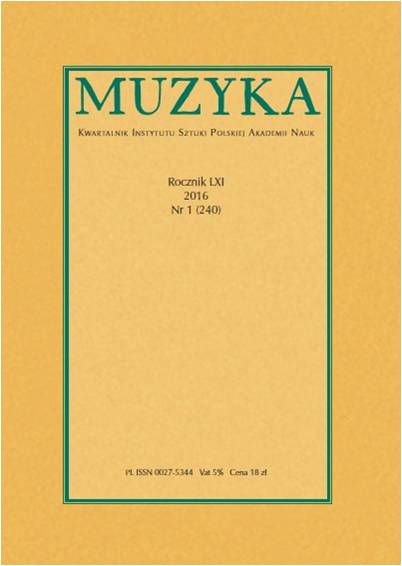Emil Młynarski w operze w Warszawie (1898–1902)
Emil Młynarski at the Warsaw Opera (1898–1902)
(Part 1)
Author(s): Elżbieta Szczepańska-LangeSubject(s): Theatre, Dance, Performing Arts, Fine Arts / Performing Arts, Music
Published by: Instytut Sztuki Polskiej Akademii Nauk
Keywords: Emil Młynarski; Warsaw Opera
Summary/Abstract: In 1898, Emil Młynarski – a violinist taught by Leopold Auer – left Russia and arrived in Warsaw with his student Paweł Kochański. Młynarski’s objective was to fulfil the ambition of his youth to become a conductor, particularly since the political climate was favourable to the cultural ambitions of Poles. He decided to take advantage of his acquaintance with the newly appointed (in 1897) deputy viceroy of the Kingdom of Poland, Aleksander Oboleński. In 1898, Młynarski started giving symphonic concerts with the orchestra of the opera house. In the autumn of 1899, Młynarski transformed the operatic orchestra into a large modern symphony orchestra, with a string section of fifty instruments. New musicians were recruited by competition. In 1900, Młynarski allocated a large sum of his own money to concerts of Polish music during the Exposition Universelle in Paris and was involved in efforts to organise them. When the initiative came to no avail, for reasons beyond his influence, the money was used to finance editions of Moniuszko’s operas.Some commentators continue to suggest that Młynarski's approach to the Russians was too conciliatory, but that is difficult to prove today.From the perspective of music history, his significance lies in how he used his position in opera to help to revive Polish operas, especially those of Moniuszko, raising the artistic level of performances (in the years 1898–1901), and in his numerous initiatives taken solely with Polish culture in mind.
Journal: Muzyka
- Issue Year: 61/2016
- Issue No: 1
- Page Range: 75-120
- Page Count: 46
- Language: Polish

